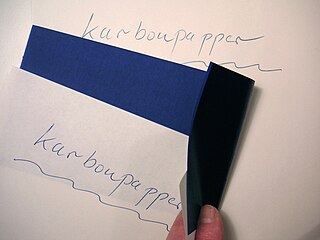
Electronic mail is a method of transmitting and receiving messages using electronic devices. It was conceived in the late–20th century as the digital version of, or counterpart to, mail. Email is a ubiquitous and very widely used communication medium; in current use, an email address is often treated as a basic and necessary part of many processes in business, commerce, government, education, entertainment, and other spheres of daily life in most countries.

An urban legend is a genre of folklore comprising claims or stories circulated as true, especially as having happened to a "friend of a friend" or a family member, often with horrifying, humorous, or cautionary elements. These legends can be entertaining but often concern mysterious peril or troubling events, such as disappearances and strange objects or entities. Urban legends may confirm moral standards, reflect prejudices, or be a way to make sense of societal anxieties. In the past, urban legends were most often circulated orally, at gatherings and around the campfire for instance. Now, they can be spread by any media, including newspapers, mobile news apps, e-mail, and most often, social media. Some urban legends have passed through the years/decades with only minor changes, in where the time period takes place. Generic urban legends are often altered to suit regional variations, but the lesson or moral generally remains the same.
A chain letter is a message that attempts to convince the recipient to make a number of copies and pass them on to a certain number of recipients. The "chain" is an exponentially growing pyramid that cannot be sustained indefinitely.

An email client, email reader or, more formally, message user agent (MUA) or mail user agent is a computer program used to access and manage a user's email.

A hoax is a widely publicized falsehood so fashioned as to invite reflexive, unthinking acceptance by the greatest number of people of the most varied social identities and of the highest possible social pretensions to gull its victims into putting up the highest possible social currency in support of the hoax.
An anonymous remailer is a server that receives messages with embedded instructions on where to send them next, and that forwards them without revealing where they originally came from. There are cypherpunk anonymous remailers, mixmaster anonymous remailers, and nym servers, among others, which differ in how they work, in the policies they adopt, and in the type of attack on the anonymity of e-mail they can resist. Remailing as discussed in this article applies to e-mails intended for particular recipients, not the general public. Anonymity in the latter case is more easily addressed by using any of several methods of anonymous publication.

Before the development of photographic copiers, a carbon copy was the under-copy of a typed or written document placed over carbon paper and the under-copy sheet itself. When copies of business letters were so produced, it was customary to use the acronym "CC" or "cc" before a colon and below the writer's signature to inform the principal recipient that carbon copies had been made and distributed to the parties listed after the colon. With the advent of word processors and e-mail, "cc" is used as a merely formal indication of the distribution of letters to secondary recipients.
When a message is replied to in e-mail, Internet forums, or Usenet, the original can often be included, or "quoted", in a variety of different posting styles.

Email spam, also referred to as junk email, spam mail, or simply spam, is unsolicited messages sent in bulk by email (spamming). The name comes from a Monty Python sketch in which the name of the canned pork product Spam is ubiquitous, unavoidable, and repetitive. Email spam has steadily grown since the early 1990s, and by 2014 was estimated to account for around 90% of total email traffic.
Email spoofing is the creation of email messages with a forged sender address. The term applies to email purporting to be from an address which is not actually the sender's; mail sent in reply to that address may bounce or be delivered to an unrelated party whose identity has been faked. Disposable email address or "masked" email is a different topic, providing a masked email address that is not the user's normal address, which is not disclosed, but forwards mail sent to it to the user's real address.

A computer virus hoax is a message warning the recipients of a non-existent computer virus threat. The message is usually a chain e-mail that tells the recipients to forward it to everyone they know, but it can also be in the form of a pop-up window.
The artificial sweetener aspartame has been the subject of several controversies since its initial approval by the U.S. Food and Drug Administration (FDA) in 1974. The FDA approval of aspartame was highly contested, beginning with suspicions of its involvement in brain cancer, alleging that the quality of the initial research supporting its safety was inadequate and flawed, and that conflicts of interest marred the 1981 approval of aspartame, previously evaluated by two FDA panels that concluded to keep the approval on hold before further investigation. In 1987, the U.S. Government Accountability Office concluded that the food additive approval process had been followed properly for aspartame. The irregularities fueled a conspiracy theory, which the "Nancy Markle" email hoax circulated, along with claims—counter to the weight of medical evidence—that numerous health conditions are caused by the consumption of aspartame in normal doses.
Email forwarding generically refers to the operation of re-sending a previously delivered email to an email address to one or more different email addresses.
An urban legend falsely stating that government-sponsored refugees receive more monetary support from the government than a country's own pensioners originated in Canada in 2004 and has since spread to other countries, including the United Kingdom, the United States, and Australia.

Make Money Fast is a title of an electronically forwarded chain letter created in 1988 which became so infamous that the term is often used to describe all sorts of chain letters forwarded over the Internet, by e-mail spam, or in Usenet newsgroups. In anti-spammer slang, the name is often abbreviated "MMF".
An email disclaimer is a disclaimer, notice or warning which is added to an outgoing email and forms a distinct section which is separate from the main message. The reasons for adding such a disclaimer include confidentiality, copyright, contract formation, defamation, discrimination, harassment, privilege and viruses.
Slow Dance is a poem by David L. Weatherford which has been widely circulated under an email hoax letter. The e-mail claims that the poem was written by a young cancer patient, and that forwarding the email will raise funds to support the American Cancer Society. Both claims are false.
The Microsoft acquisition hoax is a bogus 1994 press release suggesting that the information technology company Microsoft had acquired the Roman Catholic Church. It is considered to be the first Internet hoax to reach a mass audience.
Etiquette in technology, colloquially referred to as netiquette, is a term used to refer to the unofficial code of policies that encourage good behavior on the Internet which is used to regulate respect and polite behavior on social media platforms, online chatting sites, web forums, and other online engagement websites. The rules of etiquette that apply when communicating over the Internet are different from these applied when communicating in person or by audio or photographic phone. It is a social code that is used in all places where one can interact with other human beings via the Internet, including text messaging, email, online games, Internet forums, chat rooms, and many more. Although social etiquette in real life is ingrained into our social life, netiquette is a fairly recent concept.
A sick baby hoax is a confidence trick where a person claims, often on a website, that they have an ill child and are struggling to pay for their medical expenses. Some versions of the hoax ask people to make a monetary donation directly, while others simply encourage people to share the story.







